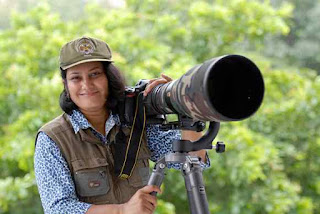Testino was nicknamed the
“John Singer Sargent of our times” by Terence Pepper, photography curator at The National Portrait Gallery in London.
[5] The Gallery’s 2002
Portraits exhibition
attracted more visitors than any other show in the museum’s history at
the time. Charles Saumarez Smith, then director of the NPG, compared
Testino to court artists and portraitists from Holbein to Reynolds.
“There
is a strong relationship between Mario’s work and the general tradition
of portrait artists. Just like court artists in the past, he works to a
tight timetable and significant commercial constraints.”[6]
One of Testino’s most memorable sittings to this day is his series with Diana, Princess of Wales. Commissioned for
Vanity Fair in 1997, he said: “
One
of my greatest experiences in life was photographing Princess Diana.
It’s not only that the experience itself was amazing, but she opened a
door for me because I then started photographing the royal families of
Europe extensively…this brings out my love for tradition, for a way of
showing family and the longevity of people”
[4]. He has
photographed many royals including The Prince of Wales, The Duke and
Duchess of Cambridge, Prince Harry, the King and Queen of Jordan and
King and Queen of the Netherlands, among others.
Testino’s work has been exhibited at museums around the world, among them the Museum of Fine Arts in Boston (In Your Face, 2012), the Shanghai Art Museum (Private View, 2012), Museo Thyssen-Bornemisza in Madrid (Todo o Nada, 2010), the Metropolitan Museum in Tokyo (Portraits, 2004) and Foam in Amsterdam (Portraits, 2003). Solo exhibitions of his work have been presented at galleries such as Mary Boone Gallery in New York, Phillips de Pury in London, Yvon Lambert in Paris and Timothy Taylor in London. More than sixteen books have been published on his work including Portraits (National Portrait Gallery, 2002), Let Me In! (Taschen, 2007), In Your Face (Taschen, 2012) and SIR (Taschen, 2015).
His growing personal collection of artworks ranging from
painting to sculpture and photography has also been the subject of
numerous shows. Testino’s relationship with fine art developed after
frequent visits to galleries and artist’s studios. He said: “Just as
photography is a vehicle for me to live a new moment, to go to a new
place, meet a new person and so on, art is a process of encounter and
discovery. The display of art for me is not just about seeing the work
isolated in a white cube. It’s also about engaging with the art – and
sometimes the artist – to make something new.”[7] He has collaborated in the creation of some unique works with artists such as Keith Haring, Vik Muniz, John Currin and Julian Schnabel.
Awarded the Order of the British Empire in 2013 in
recognition of his career and charity work, in 2010 he was also
appointed one of the highest honours in his native country, The Grand
Cross Order of Merit in Peru, and became President of the Board of World Monuments Fund Peru
in 2014. He has worked with Save the Children, amfAR, The Elton John
Aids Foundation and CLIC Sargent for children with cancer. The arts are a
source of joy to Testino to the extent that in 2012 he opened a
non-profit museum in Lima. MATE – Museo Mario Testino
was established to contribute to Peru through the cultivation and
promotion of culture and heritage. For Testino, art is never static. It
is something to be appreciated and collected as fragments that make up a
greater mental library: a library that is in constant flow.






